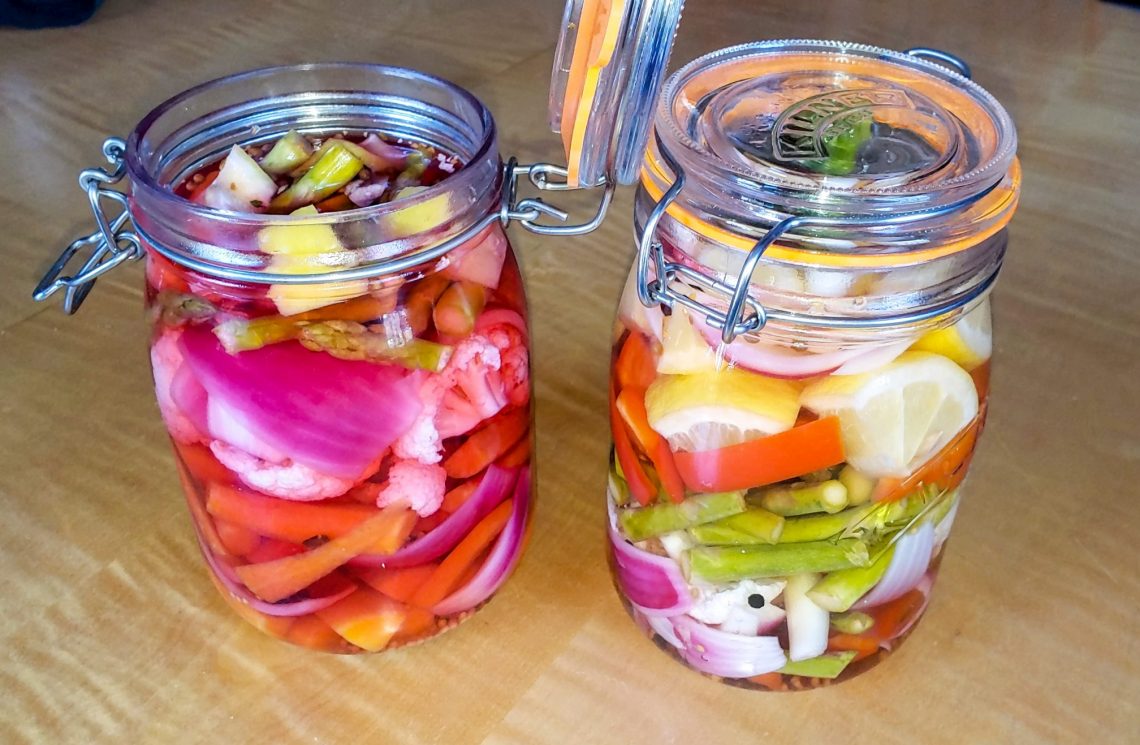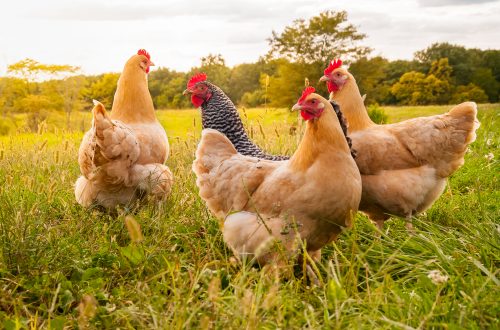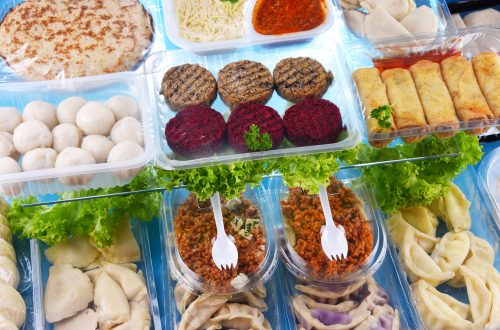
For Vegetables, Try Pickling
For about 4,000 years, humans have been pickling their food. Before refrigerators and freezers, we needed a means to preserve vegetables, fruits, meat, and fish, so we added a preservation medium to prevent bacteria and enzymes from spoiling them. Typically, brine or vinegar was used once humans learned that highly acidic or strong salt solutions prevented spoilage. The English word for pickle in fact derives from the Dutch word “pekel,” which refers to the brine used. Across the globe, humans also eventually learned that herbs such as mustard seed, garlic, cinnamon, and cloves had some antimicrobial properties.
Cauliflower and carrots
This is an ideal time of year to pickle some vegetables. They’re great for snacks, appetizers, sandwiches, and as a side dish, and can be used in any number of cuisines. Pickling adds an entirely different flavor dimension to vegetables than the usual streaming, braising, or boiling.
Making pickled vegetables is a relatively easy exercise. I decided to try a new recipe. First, I bought two new quart-size mason jars with sealable lids from the local aggie co-op, and picked up enough fresh, raw veggies to fill those two jars – about 5 or 6 cups. My choice was carrots, cauliflower, red and orange sweet peppers, asparagus, scallions, and a red onion.
To make sure the jars were clean and sterile, I washed and rinsed them with boiling water. Then I washed the vegetables and sliced them into bite-size spears and chunks, and packed them into the jars along with some whole spices, filling to about an inch from the top. This recipe called for coriander, fennel, and mustard seeds as well as a smashed garlic clove. I’m sure in the summer, I’d want to include some fresh herbs such as basil or dill.
For the pickling liquid, I combined 2 cups each of water and cider vinegar along with two tablespoons of kosher salt and four tablespoons of sugar, and brought it to a boil. (You can vary the sugar amount based on your desire for bitter or sweet.) Then I carefully poured the brine over the vegetables, making sure the liquid completely covered the veggies, leaving about half an inch between the liquid and the lid.
I snapped the covers on the jars and let them cool for an hour or two before placing them in the refrigerator. The recipe says that they will taste good after six to eight hours, but they’ll be even better in a few days. In fact, I’m planning to try them on a burger for dinner tonight while watching the football game.
Cabbage and radish
Next, I’m going to try torshi masalahdar, an Afghan spiced pickled vegetable recipe that’s described as being tangier, due to its inclusion of citrus and two parts vinegar to one part olive oil, as well as dried red chilies and chili powder. Or maybe I’ll make some kimchi, a classic Korean condiment, which uses large amounts of salt to brine the chopped cabbage and radish treat.
But I won’t be “in a pickle.” That old phrase has been used at least since the time of Samuel Pepys, who included it in his early 17th-century dictionary, to describe a difficult situation – to be mixed up or disoriented as the cucumbers might be in a jar of brine.
To comment, please click on “Read in Browser” or on the headline to view the blog on the website. You can log in and comment at the end of the blog to share your thoughts and start a discussion.
If you’d like to share the blog, click on the Facebook icon or one of the others. Thanks!




